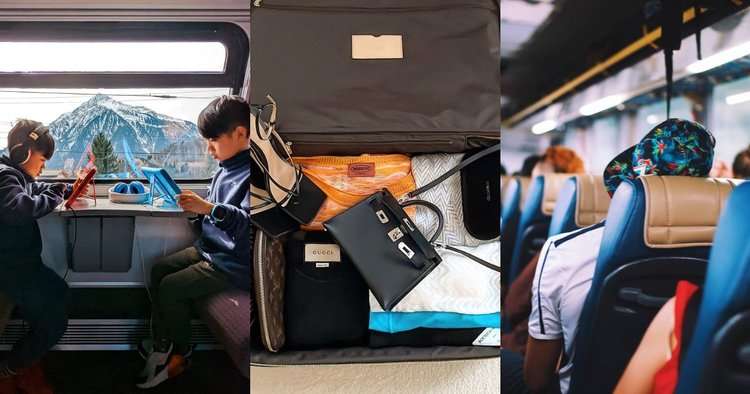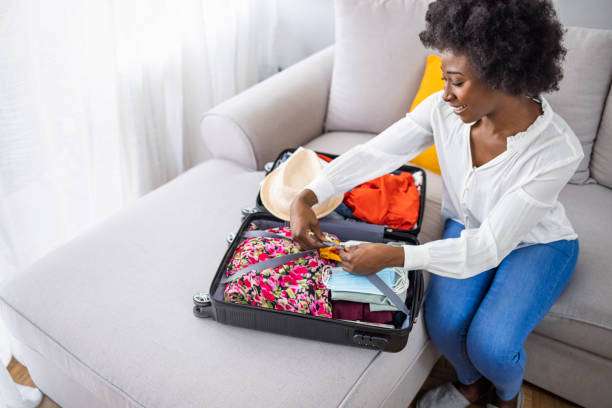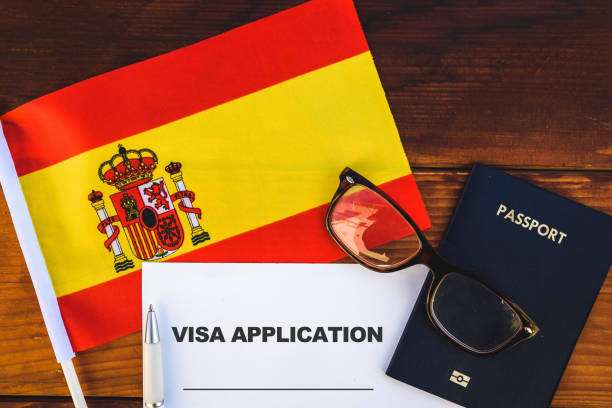If you’re thinking about exploring the different cities in Europe, but you’re not quite sure about how to travel from one city to the next, this guide will show you the best options and answer any questions you may have. Europe has an extensive and efficient intercity travel network that makes it easy to travel from one city to the next. Whether you’re a fan of buses, trains, ferries, or flights, there’s a travel option that suits your style and budget.
Buses
Traveling by bus in Europe is a popular and cost-effective option for many. Here are some of the top companies you can rely on:
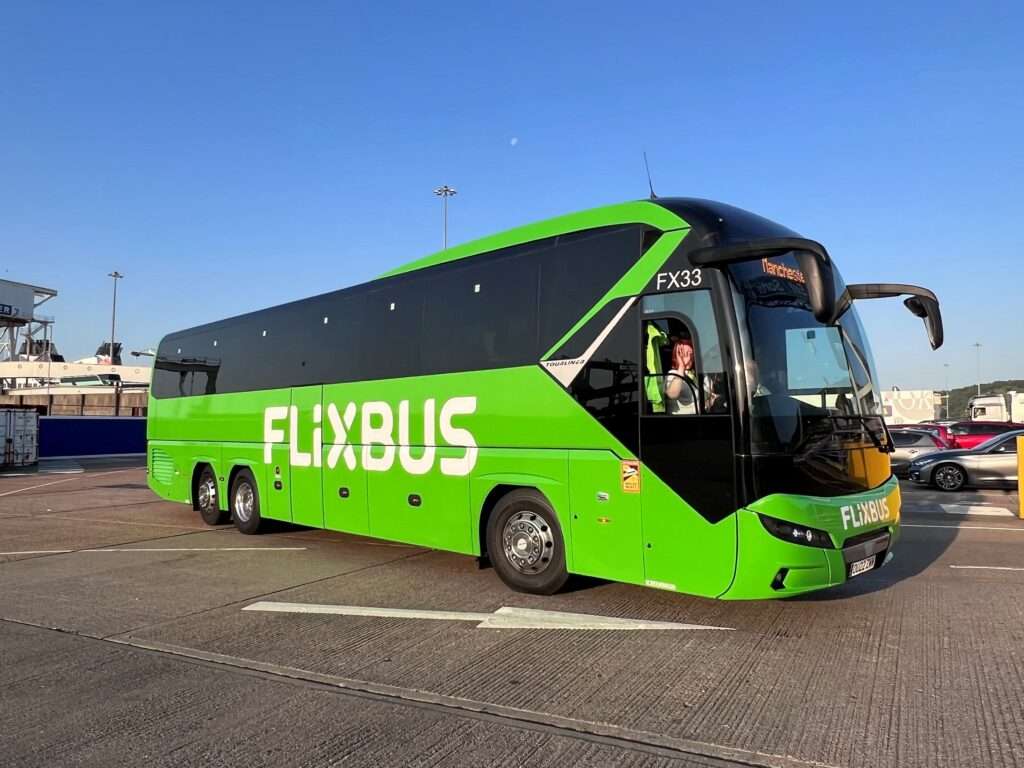
FlixBus
FlixBus is a leading bus service provider in Europe, known for its extensive network and affordable prices. They operate in over 30 countries and cover more than 2,000 destinations.
- Popular Routes: Berlin to Prague, Paris to Brussels, Amsterdam to Paris.
- Prices: Starting from €15.
- Amenities: Free Wi-Fi, power outlets, reclining seats, snacks and drinks for purchase.
- Restrictions: Limited luggage space, bikes allowed with prior booking.
- Pros: Extensive network, affordable prices, frequent departures.
- Cons: Can be crowded, limited legroom, delays are common.
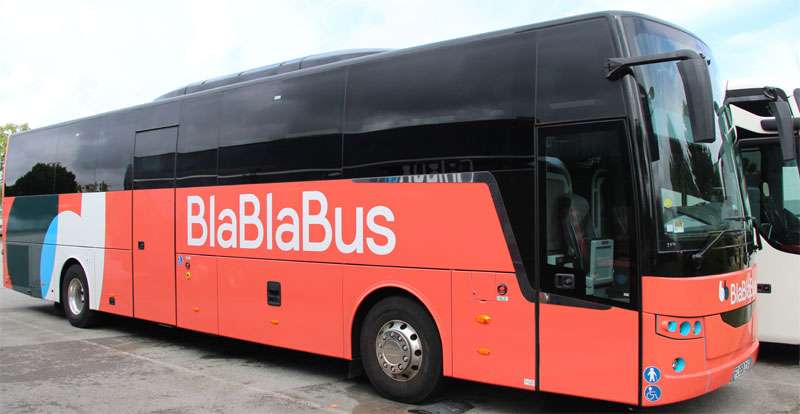
Blablabus (formerly OuiBus)
Blablabus, a part of the BlaBlaCar family, provides affordable and comfortable bus travel across Europe. They are known for their punctuality and excellent service.
- Popular Routes: Paris to Lyon, Milan to Turin, Brussels to London.
- Prices: Starting from €10.
- Amenities: Wi-Fi, power outlets, spacious seats, snacks.
- Restrictions: No large sports equipment, limited luggage space.
- Pros: Affordable fares, reliable service, comfortable seating.
- Cons: Limited routes, basic amenities.
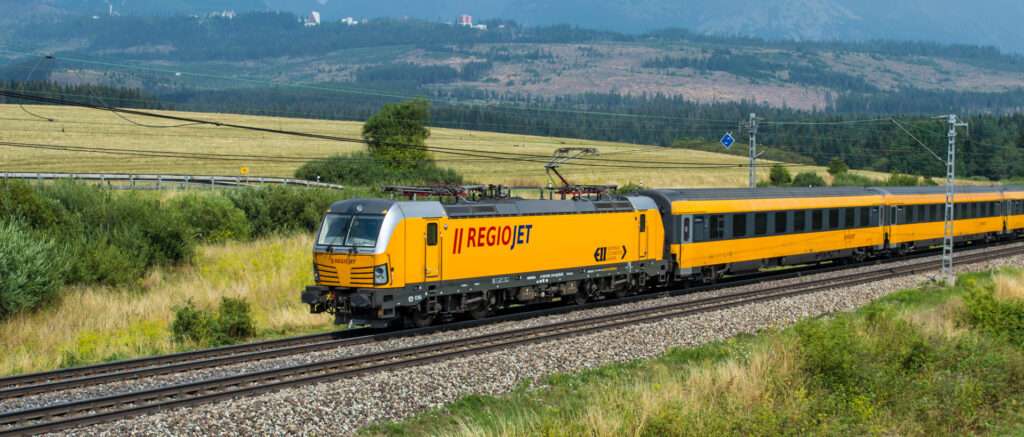
RegioJet
RegioJet is a Czech transport company offering high-quality bus and train services. They are known for their low prices and excellent amenities.
- Popular Routes: Prague to Vienna, Budapest to Bratislava, Berlin to Prague.
- Prices: Starting from €9.
- Amenities: Free hot drinks, Wi-Fi, entertainment screens, air conditioning.
- Restrictions: Limited luggage, no pets allowed.
- Pros: Low prices, excellent amenities, comfortable travel.
- Cons: Limited route network, often booked up quickly.
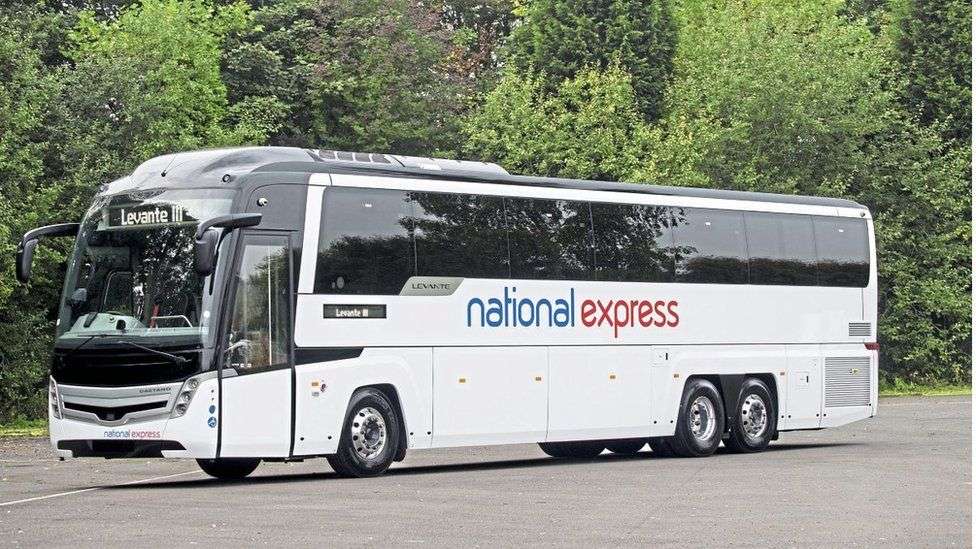
National Express
National Express is a leading bus operator in the UK, offering intercity connections throughout the country and into Europe.
- Popular Routes: London to Manchester, London to Liverpool, London to Glasgow.
- Prices: Starting from £5.
- Amenities: Wi-Fi, toilets, air conditioning, reclining seats.
- Restrictions: Limited luggage, no pets allowed.
- Pros: Extensive UK network, affordable prices, frequent departures.
- Cons: Limited European routes, basic amenities on some buses.
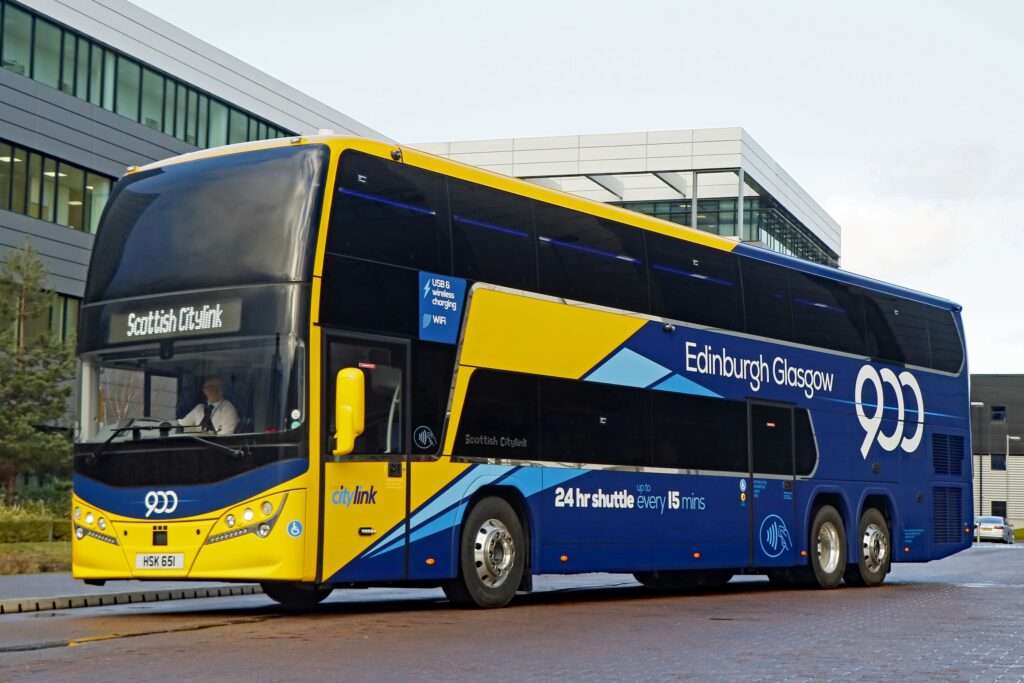
Citylink
Citylink is a prominent coach operator in Scotland, providing extensive routes across the country and into England.
- Popular Routes: Edinburgh to Glasgow, Inverness to Aberdeen, Dundee to Perth.
- Prices: Starting from £7.
- Amenities: Wi-Fi, power outlets, toilets, comfortable seating.
- Restrictions: Limited luggage, no pets allowed.
- Pros: Extensive Scottish network, comfortable buses, reliable service.
- Cons: Limited routes outside Scotland, higher prices on some routes.
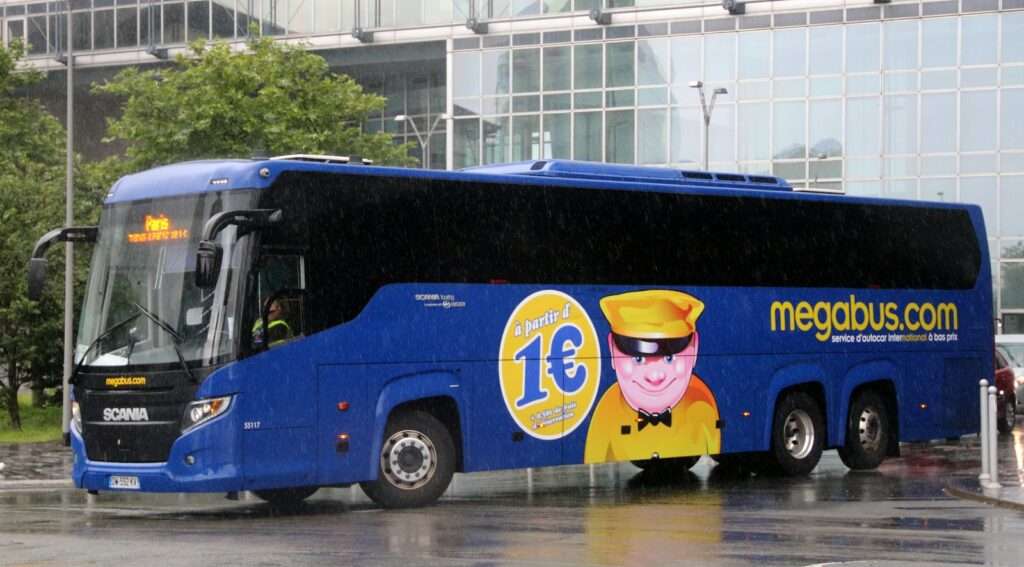
Megabus
Megabus offers budget-friendly bus travel across the UK and Europe, with a focus on providing affordable fares and frequent services. I have traveled for as little as £5 in the past.
- Popular Routes: London to Paris, Brussels to Amsterdam, Edinburgh to London.
- Prices: Starting from £1.
- Amenities: Wi-Fi, power outlets, toilets, reclining seats.
- Restrictions: Limited luggage, no pets allowed.
- Pros: Extremely low prices, extensive route network, frequent departures.
- Cons: Can be crowded, basic amenities, limited legroom.
Trains
Train travel in Europe is renowned for its speed, comfort, and scenic routes. Here are the top train companies to consider:
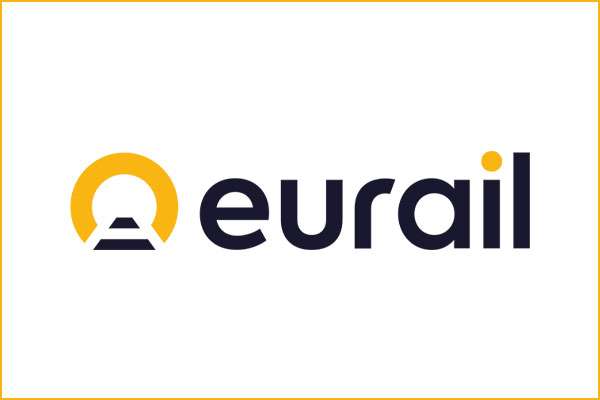
Eurail/Interrail
Eurail (for non-Europeans) and Interrail (for Europeans) offer rail passes that provide unlimited travel on most European trains. These passes are ideal for those looking to explore multiple countries.
- Popular Routes: Across 33 countries with customizable passes.
- Prices: Passes start from €185 for 4 days of travel within a month.
- Amenities: Varied based on the train company, but often include Wi-Fi, dining cars, and comfortable seating.
- Restrictions: Some high-speed trains require seat reservations.
- Pros: Flexible travel across multiple countries, cost-effective for extensive travel.
- Cons: Can be confusing to navigate, seat reservations can be an extra cost.
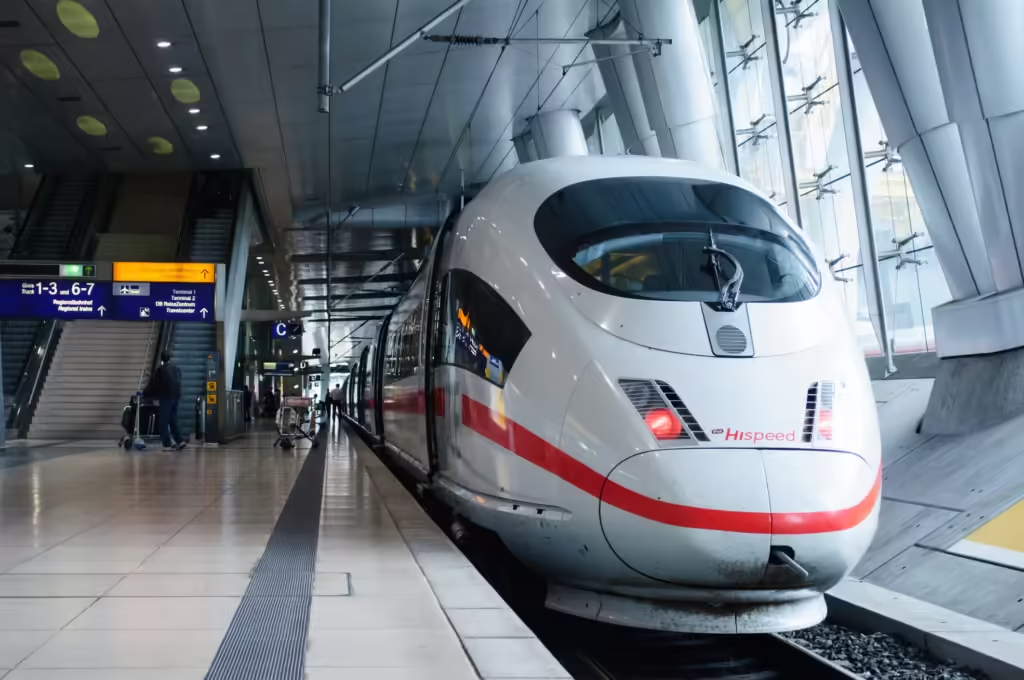
Deutsche Bahn (DB)
Deutsche Bahn is Germany’s national railway company, known for its punctuality and extensive network. They offer a range of services from local to high-speed trains.
- Popular Routes: Berlin to Munich, Frankfurt to Cologne, Hamburg to Berlin.
- Prices: Starting from €29.90.
- Amenities: Wi-Fi, power outlets, dining options, quiet zones.
- Restrictions: Bikes need a reservation, limited luggage space.
- Pros: Extensive network, high-speed trains, comfortable amenities.
- Cons: Can be expensive without advanced booking, delays can occur.
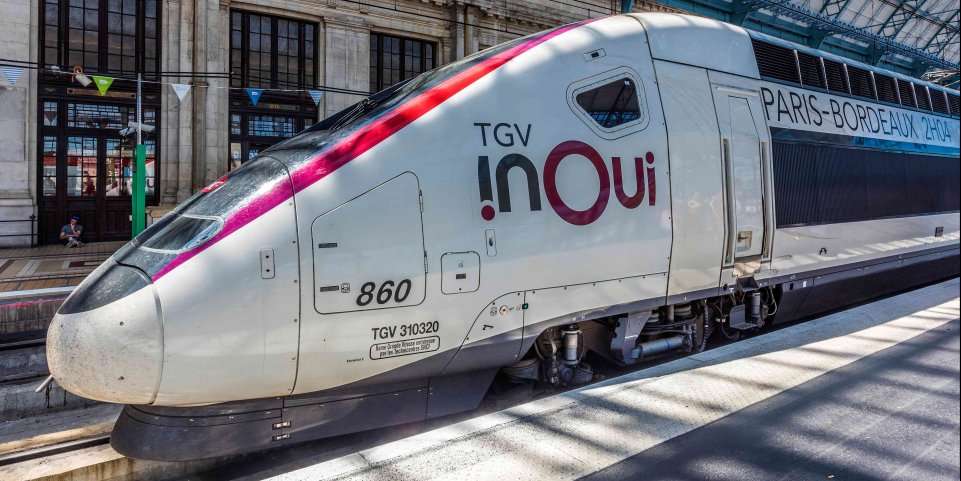
SNCF (TGV/InOui)
SNCF operates France’s high-speed trains, including the famous TGV. They offer fast and comfortable travel across France and into neighboring countries.
- Popular Routes: Paris to Marseille, Paris to Lyon, Paris to Bordeaux.
- Prices: Starting from €25.
- Amenities: Wi-Fi, dining cars, reclining seats, power outlets.
- Restrictions: Bikes allowed with reservation, limited luggage space.
- Pros: High-speed travel, comfortable seating, extensive French network.
- Cons: Can be expensive without advanced booking, seat reservations required.
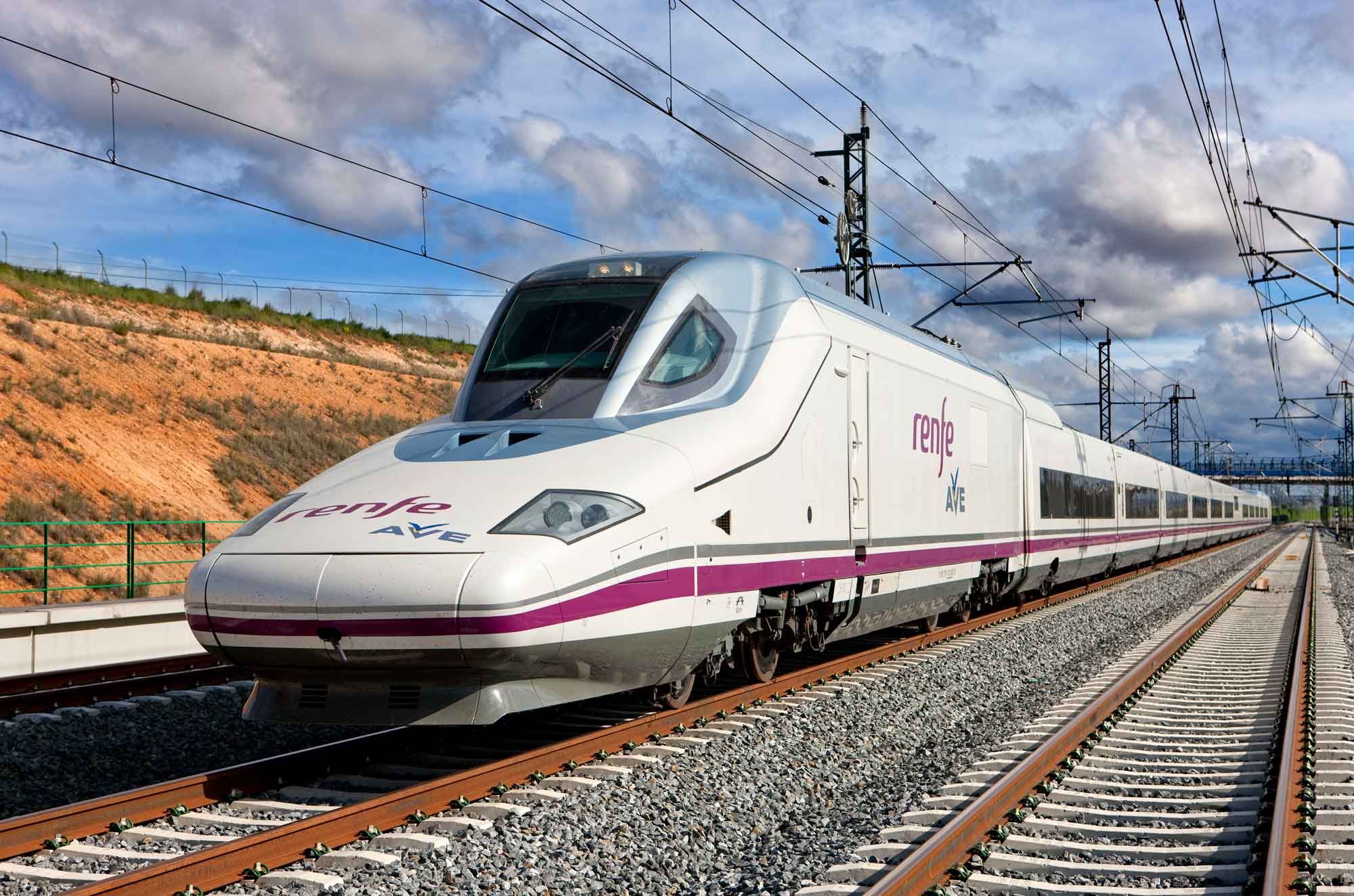
Renfe
Renfe is Spain’s national railway company, offering extensive high-speed and regional services. They are known for their punctuality and comfort.
- Popular Routes: Madrid to Barcelona, Madrid to Seville, Madrid to Valencia.
- Prices: Starting from €35.
- Amenities: Wi-Fi, power outlets, dining options, spacious seats.
- Restrictions: Limited luggage, bikes allowed with reservation.
- Pros: High-speed trains, comfortable seating, punctual service.
- Cons: Limited international routes, seat reservations required.
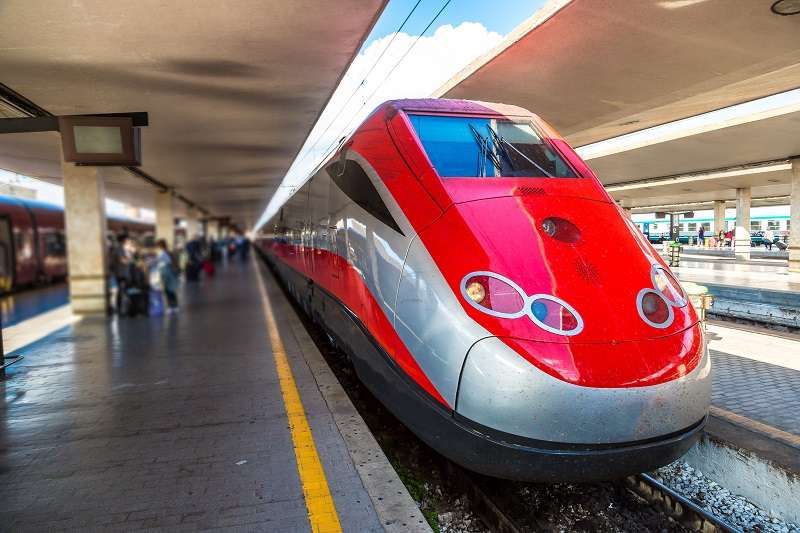
Trenitalia
Trenitalia is Italy’s primary train operator, offering high-speed and regional services. They are known for their efficiency and comfort.
- Popular Routes: Rome to Florence, Rome to Milan, Venice to Rome.
- Prices: Starting from €20.
- Amenities: Wi-Fi, dining cars, power outlets, reclining seats.
- Restrictions: Limited luggage, bikes allowed with reservation.
- Pros: High-speed trains, affordable prices, extensive Italian network.
- Cons: Can be crowded, delays can occur.
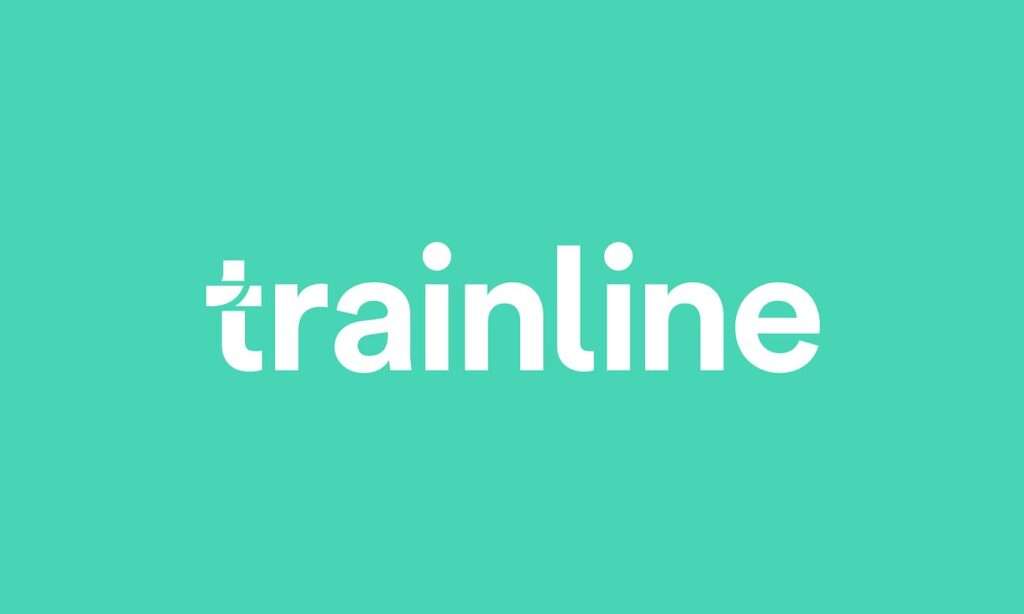
Trainline
Trainline is an online platform that allows you to book train tickets across Europe. They partner with various rail companies to offer competitive prices and convenient booking options.
- Popular Routes: Covers major routes across Europe, partnering with national rail operators.
- Prices: Varies depending on the route and operator.
- Amenities: Dependent on the train company, typically includes Wi-Fi, power outlets, and dining options.
- Restrictions: Dependent on the train company.
- Pros: Easy booking process, competitive prices, extensive route coverage.
- Cons: Service fees can be added, availability dependent on partner companies.
Ferries
Ferry travel is a great way to enjoy the scenic coastal views of Europe. Here are some top ferry companies and combination offers:
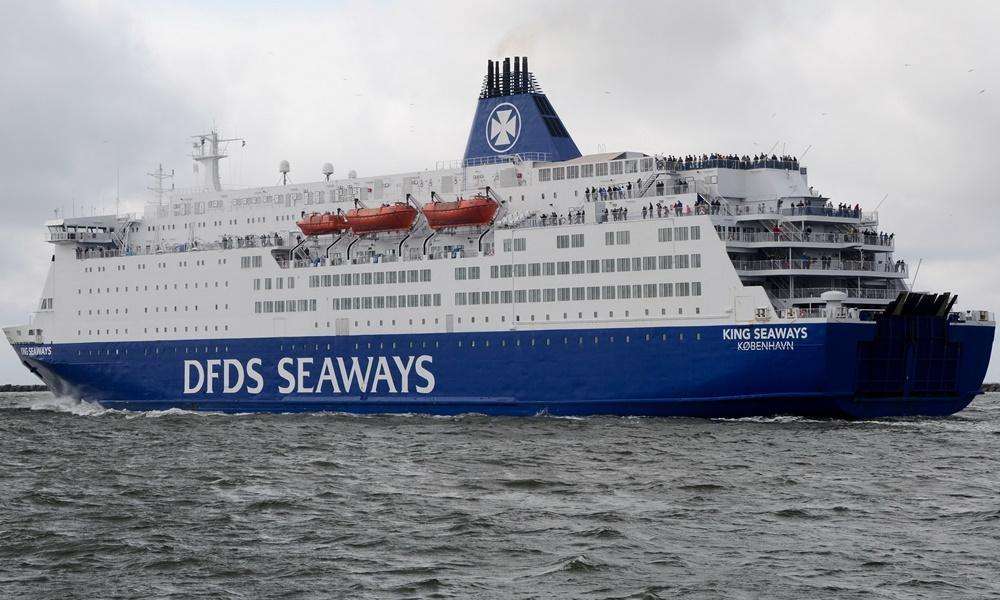
DFDS Seaways
DFDS Seaways is a Danish shipping company offering ferry services across Northern Europe. They are known for their comfortable and reliable service.
- Popular Routes: Amsterdam to Newcastle, Dover to Calais, Copenhagen to Oslo.
- Prices: Starting from €50.
- Amenities: Restaurants, bars, cabins, entertainment options.
- Restrictions: Limited luggage, pets allowed in designated areas.
- Pros: Comfortable cabins, extensive routes, reliable service.
- Cons: Can be expensive, long travel times.
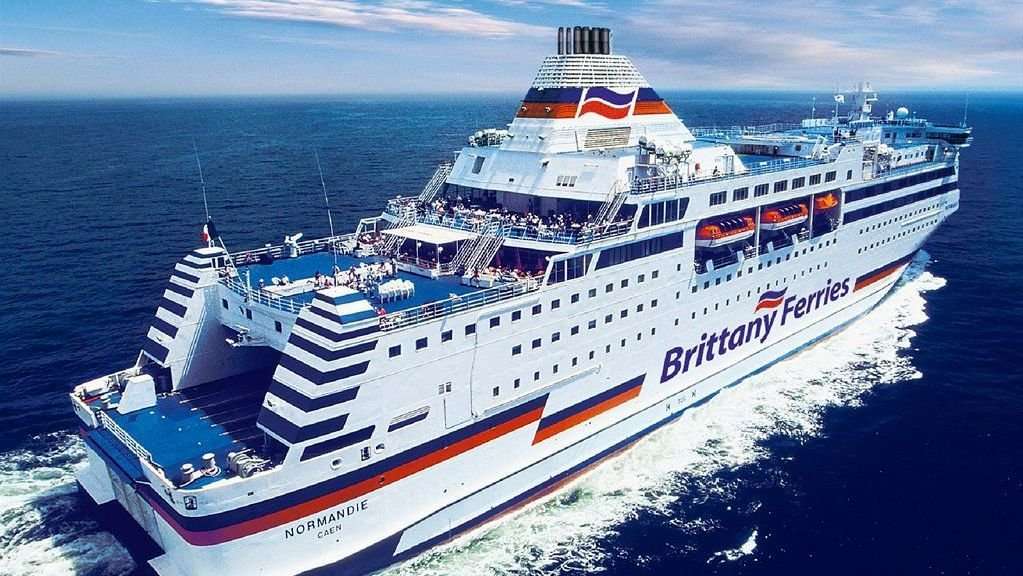
Brittany Ferries
Brittany Ferries operates ferry services between the UK, Ireland, France, and Spain. They are known for their high-quality service and comfortable amenities.
- Popular Routes: Portsmouth to Caen, Plymouth to Santander, Roscoff to Cork.
- Prices: Starting from €60.
- Amenities: Cabins, restaurants, bars, entertainment.
- Restrictions: Limited luggage, pets allowed in designated areas.
- Pros: Comfortable cabins, good amenities, reliable service.
- Cons: Can be expensive, limited routes.
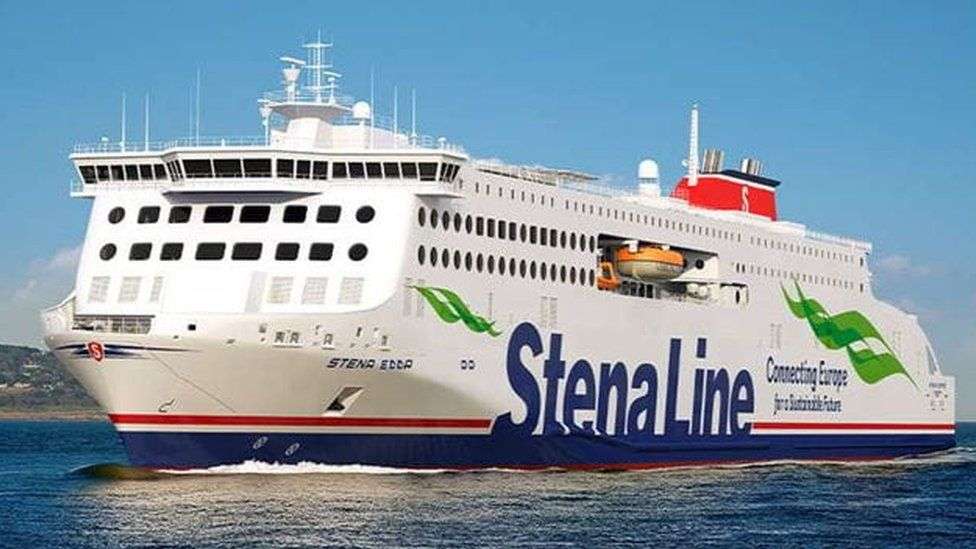
Stena Line
Stena Line is one of the world’s largest ferry operators, offering services across Northern Europe. They are known for their reliability and excellent service. I rode this ferry from Belfast to Glasgow and I really enjoyed the experience.
- Popular Routes: Harwich to Hook of Holland, Holyhead to Dublin, Gothenburg to Kiel.
- Prices: Starting from €40.
- Amenities: Restaurants, bars, cabins, duty-free shopping.
- Restrictions: Limited luggage, pets allowed in designated areas.
- Pros: Extensive route network, comfortable amenities, reliable service.
- Cons: Long travel times, can be expensive.
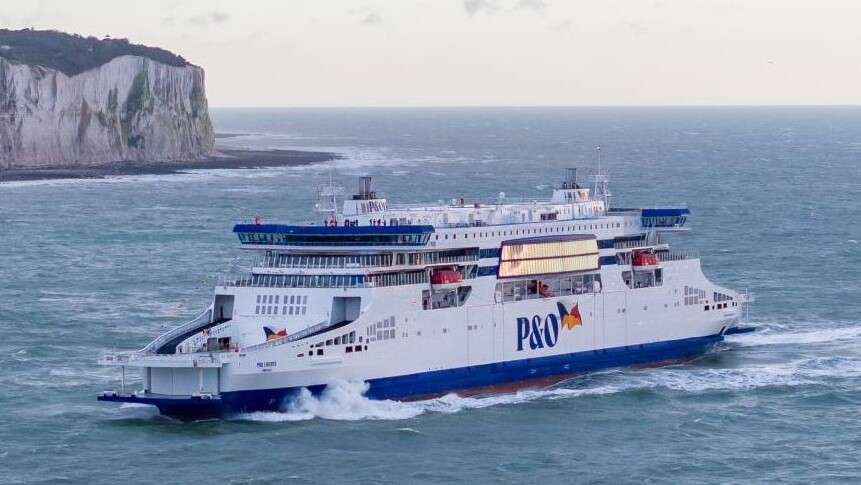
P&O Ferries
P&O Ferries operates ferry services between the UK and mainland Europe. They are known for their affordability and comfortable service.
- Popular Routes: Dover to Calais, Hull to Rotterdam, Liverpool to Dublin.
- Prices: Starting from €30.
- Amenities: Restaurants, bars, cabins, entertainment options.
- Restrictions: Limited luggage, pets allowed in designated areas.
- Pros: Affordable prices, comfortable amenities, frequent departures.
- Cons: Can be crowded, long travel times.
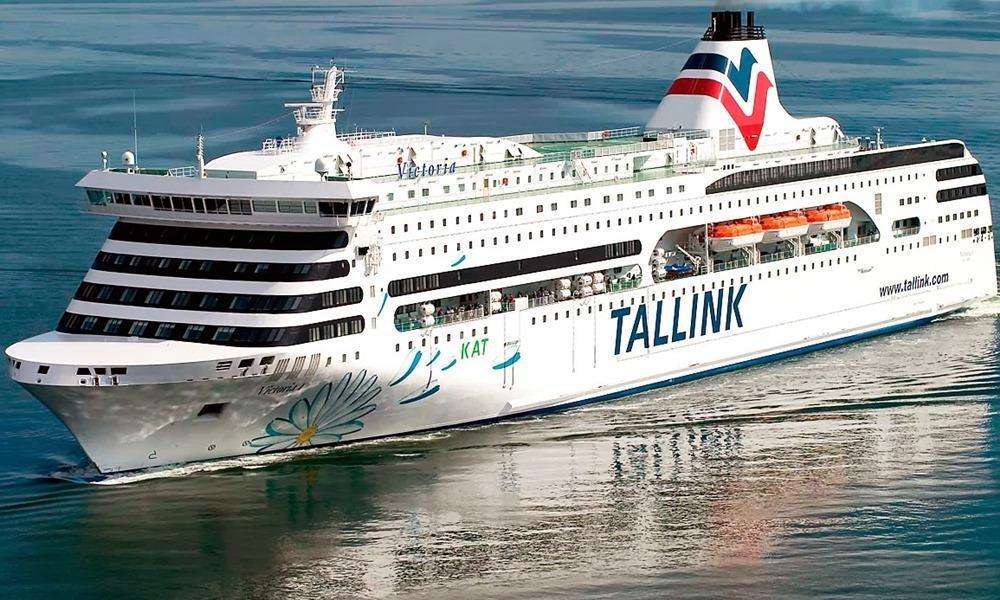
Tallink Silja
Tallink Silja operates ferry services in the Baltic Sea region, connecting Finland, Estonia, Sweden, and Latvia. They are known for their luxurious amenities and reliable service.
- Popular Routes: Helsinki to Tallinn, Stockholm to Helsinki, Riga to Stockholm.
- Prices: Starting from €35.
- Amenities: Restaurants, bars, cabins, spa facilities, duty-free shopping.
- Restrictions: Limited luggage, pets allowed in designated areas.
- Pros: Luxurious amenities, extensive route network, reliable service.
- Cons: Can be expensive, long travel times.
Sail and Rail Combinations
Many ferry companies offer combined ferry and train tickets, making it easier to travel across water and land with a single booking. Here are a few examples:
- DFDS Seaways & Eurostar: Combine ferry travel from Amsterdam to Newcastle with a Eurostar train ticket to London.
- Stena Line & Deutsche Bahn: Combine ferry travel from Harwich to Hook of Holland with a Deutsche Bahn train ticket to Berlin.
- Brittany Ferries & SNCF: Combine ferry travel from Portsmouth to Caen with an SNCF train ticket to Paris.
Flights
If you need to cover longer distances quickly, flying is often the best option. Here are the top airlines for intercity travel in Europe:
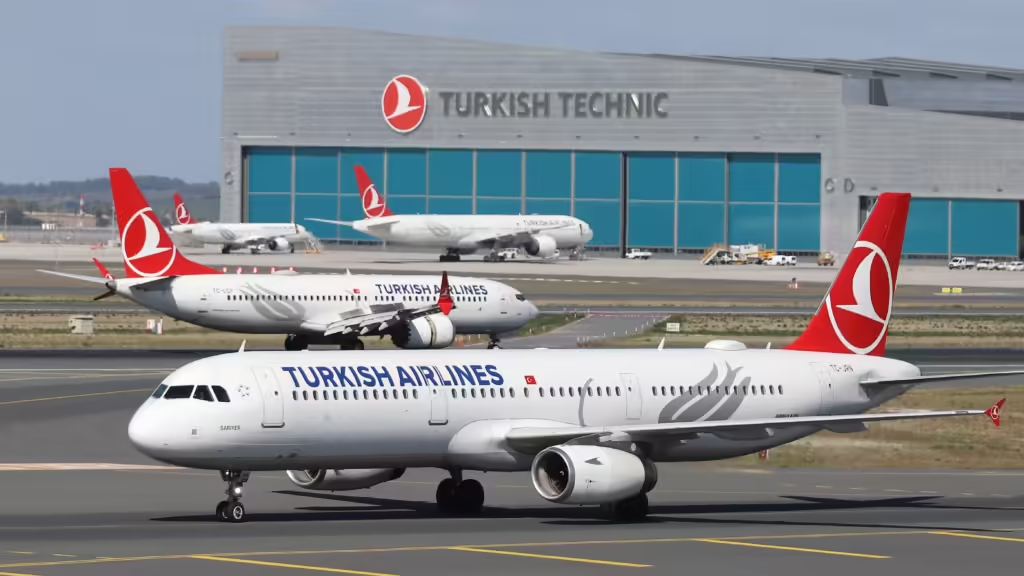
Turkish Airlines
Turkish Airlines is renowned for its excellent service, extensive route network, and in-flight amenities, and my favorite airline. They operate flights to over 300 destinations worldwide.
- Popular Routes: Istanbul to London, Istanbul to Paris, Istanbul to Rome.
- Prices: Starting from €50.
- Amenities: In-flight entertainment, meals, Wi-Fi on some flights, comfortable seating.
- Restrictions: Standard baggage policy, additional fees for extra luggage.
- Pros: Excellent service, extensive route network, comfortable amenities.
- Cons: Can be expensive, limited budget options, no alcohol except wine.
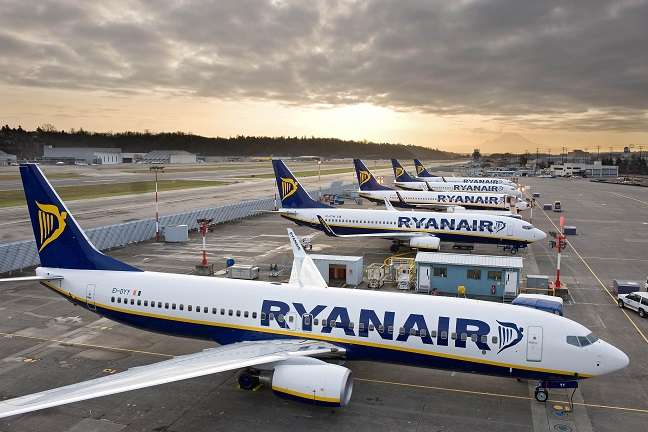
Ryanair
Ryanair is Europe’s largest low-cost airline, known for its budget-friendly fares and extensive route network. They operate flights to over 200 destinations across Europe.
- Popular Routes: London to Dublin, Barcelona to Rome, Berlin to Vienna.
- Prices: Starting from €10.
- Amenities: No-frills, snacks and drinks for purchase, priority boarding for a fee.
- Restrictions: Strict carry-on baggage policy, checked baggage for a fee.
- Pros: Extremely low prices, extensive route network, frequent flights.
- Cons: Strict baggage policies, limited amenities, additional fees.
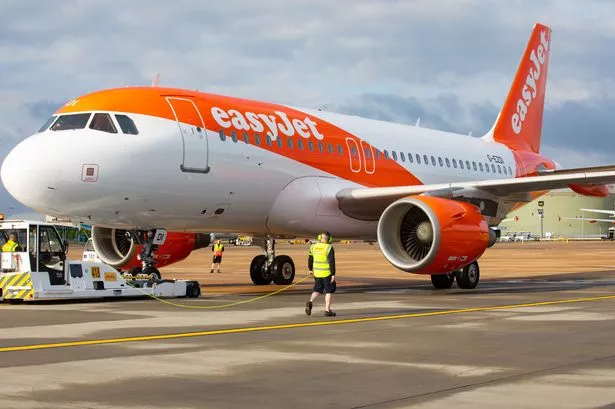
EasyJet
EasyJet is a British low-cost airline, offering affordable flights across Europe. They are known for their extensive network and reliable service.
- Popular Routes: London to Amsterdam, Paris to Milan, Berlin to Rome.
- Prices: Starting from €15.
- Amenities: No-frills, snacks and drinks for purchase, priority boarding for a fee.
- Restrictions: Strict carry-on baggage policy, checked baggage for a fee.
- Pros: Affordable fares, extensive route network, reliable service.
- Cons: Strict baggage policies, limited amenities, additional fees.
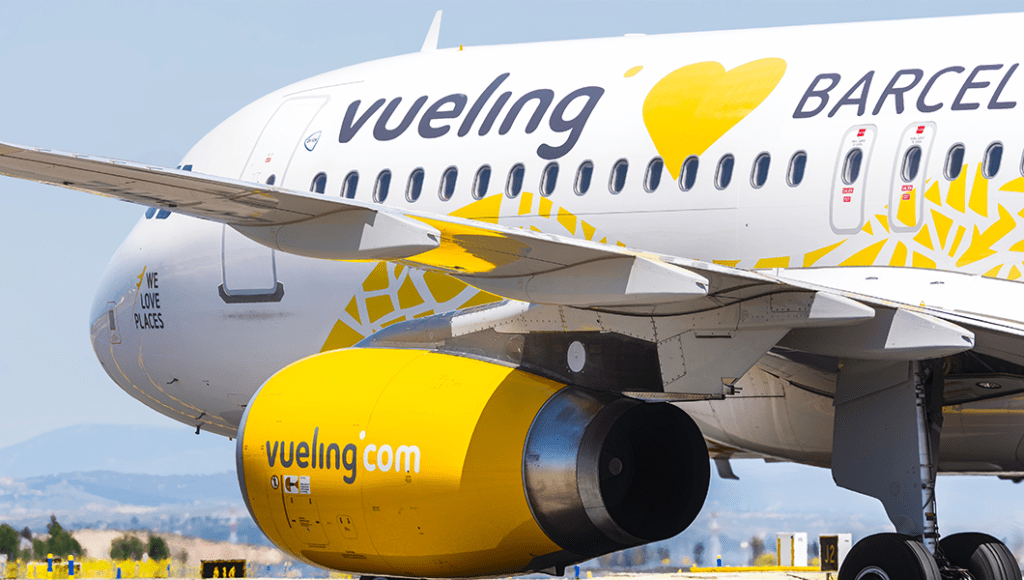
Vueling
Vueling is a Spanish low-cost airline, part of the IAG group. They offer affordable flights to major European destinations
- Popular Routes: Barcelona to Paris, Rome to Madrid, Lisbon to Barcelona.
- Prices: Starting from €20.
- Amenities: No-frills, snacks and drinks for purchase, priority boarding for a fee.
- Restrictions: Strict carry-on baggage policy, checked baggage for a fee.
- Pros: Affordable fares, extensive route network, reliable service.
- Cons: Strict baggage policies, limited amenities, additional fees.
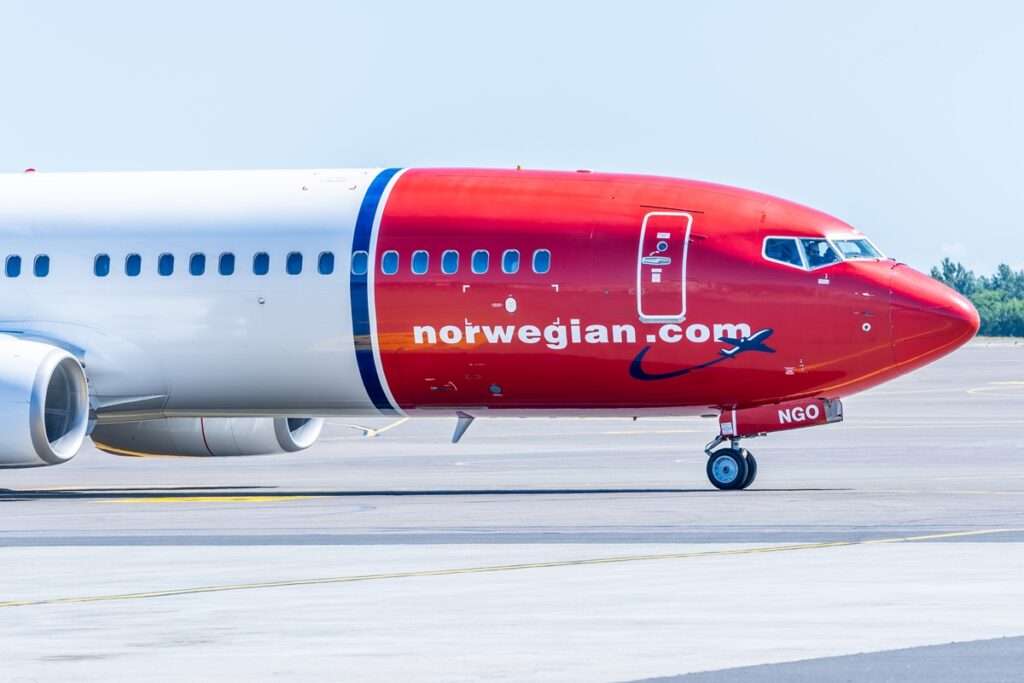
Norwegian Air Shuttle
Norwegian Air Shuttle is a Norwegian low-cost airline known for its affordable fares and modern fleet. They offer extensive routes across Europe.
- Popular Routes: Oslo to Stockholm, Copenhagen to Barcelona, London to Oslo.
- Prices: Starting from €25.
- Amenities: Wi-Fi on some flights, snacks and drinks for purchase, in-flight entertainment.
- Restrictions: Strict carry-on baggage policy, checked baggage for a fee.
- Pros: Affordable fares, extensive route network, modern fleet.
- Cons: Strict baggage policies, limited amenities, additional fees.
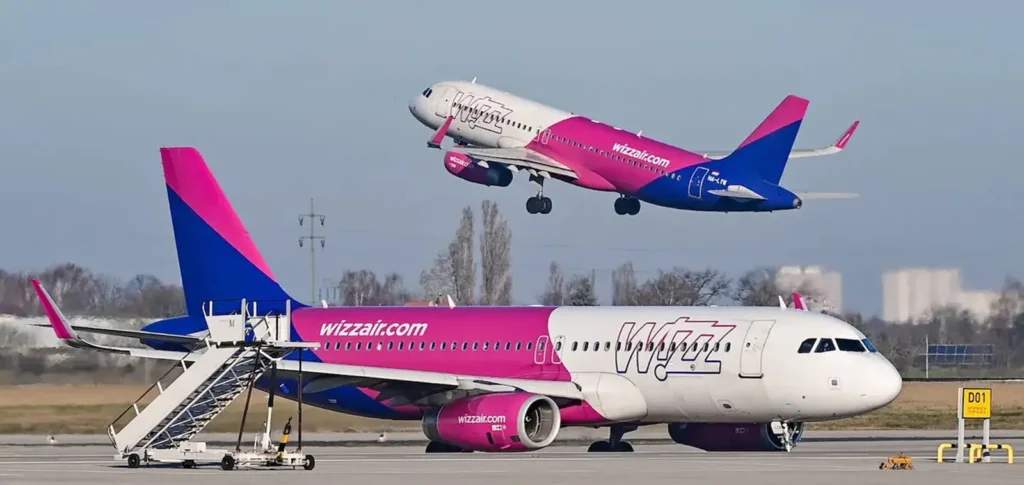
Wizz Air
Wizz Air is a Hungarian low-cost airline, offering budget-friendly flights to over 140 destinations across Europe.
- Popular Routes: Budapest to London, Warsaw to Rome, Sofia to Paris.
- Prices: Starting from €10.
- Amenities: No-frills, snacks and drinks for purchase, priority boarding for a fee.
- Restrictions: Strict carry-on baggage policy, checked baggage for a fee.
- Pros: Extremely low prices, extensive route network, frequent flights.
- Cons: Strict baggage policies, limited amenities, additional fees.

Frequently Asked Questions About Getting Around in Europe
Here are the answers to the 50 most frequently asked questions about intercity travel in Europe:
What’s the cheapest way to travel between cities in Europe?
Buses are generally the cheapest option, with FlixBus offering routes starting at €10. However, budget airlines like Ryanair and Wizz Air can also be very affordable if you book in advance and travel light.
How can I find the best deals on train travel?
Book in advance, use rail passes like Eurail/Interrail for flexible travel, and check for special promotions on websites like Trainline. Additionally, travel during off-peak times and consider second-class tickets for the best deals.
Are there Wi-Fi and power outlets on buses?
Yes, most modern buses like FlixBus and RegioJet offer free Wi-Fi and power outlets. Always check the amenities listed when booking your ticket to ensure these features are available.
Can I take my bike on a train or bus?
Yes, but you usually need to reserve a spot for your bike in advance. Different companies have different policies and fees, so check with the provider before traveling.
Do ferries in Europe offer cabins for overnight trips?
Yes, companies like DFDS Seaways and Brittany Ferries offer cabins for overnight trips. These cabins vary in size and comfort, ranging from basic rooms to luxurious suites.
How strict are airlines with carry-on baggage?
Budget airlines like Ryanair and EasyJet are very strict with carry-on sizes and weights. It’s important to adhere to their policies to avoid extra fees. Always check the airline’s baggage policy before packing.
Are pets allowed on European trains and buses?
Some companies allow pets, but there are restrictions and additional fees. Generally, small pets can travel in a carrier, while larger pets may require a ticket. Always check the specific policy of the transport provider.
What’s the best way to travel from Paris to Berlin?
High-speed trains (SNCF and Deutsche Bahn) are convenient, with prices starting from €39. Flights are also an option and can be faster, but train travel offers a more scenic and comfortable experience.
Are there discounts for students or seniors?
Many companies offer discounts for students, seniors, and young travelers. Always check their websites for specific details and make sure to carry a valid ID to prove your eligibility.
How early should I book my travel tickets?
The earlier, the better for the best prices, especially for trains and flights. For popular routes and during peak travel seasons, booking several months in advance can secure the lowest fares.
Can I use my phone’s data plan while traveling?
Check with your provider; EU roaming rules allow you to use your data across EU countries without extra charges. However, if you’re traveling outside the EU, roaming charges may apply.
Are there night trains in Europe?
Yes, there are night trains, like the ones operated by ÖBB Nightjet and Trenitalia. These trains often offer sleeper cabins and reclining seats for overnight travel.
What should I do if I miss my bus or train?
Contact the company’s customer service immediately; some might offer flexible tickets or rebooking options. It’s also a good idea to check the terms and conditions when booking your ticket to understand their policy on missed departures.
Is there a maximum luggage size for buses?
Yes, usually one large suitcase and one carry-on are allowed. Specific size and weight limits vary by company, so check their policies before traveling.
How do I get from the airport to the city center?
Most airports have regular train, bus, or metro connections to the city center. Taxis and ride-sharing services are also available, but they can be more expensive.
Can I get a refund if I cancel my travel plans?
It depends on the company’s policy; some offer refundable tickets, while others have strict no-refund policies. Always check the cancellation terms before purchasing your ticket.
Do I need to print my tickets?
Many companies accept mobile tickets, but it’s wise to check the requirements of your specific provider. Having a printed copy as a backup can also be helpful.
Are there any travel restrictions I should be aware of?
Travel restrictions can change due to political or health reasons, so it’s important to check the latest updates from official sources before you travel.
How do I find my departure platform or gate?
Check your ticket and look for information boards at the station or airport. Staff members are usually available to help if you’re unsure.
Is it safe to travel by bus or train at night?
Generally, yes. Major bus and train companies have security measures in place. However, always be aware of your surroundings and keep an eye on your belongings.
What is the difference between first and second class on trains?
First class offers more spacious seating, complimentary services like snacks and drinks, and quieter environments. Second class is more affordable and still quite comfortable.
Can I eat and drink on buses and trains?
Yes, but be mindful of other passengers. Many trains and buses have dining cars or snack services available.
How do I handle a language barrier while traveling?
English is widely spoken in tourist areas. Learning a few basic phrases in the local language can be helpful, and translation apps can assist with communication.
Are there facilities for disabled travelers?
Most transportation companies in Europe offer facilities for disabled travelers, including ramps, designated seating, and assistance services. Always inform the company of your needs when booking.
Can I book last-minute tickets?
Yes, but availability and prices can vary. It’s always best to book in advance for popular routes to ensure you get a seat and a good price.
What’s the best way to travel with children?
Trains are often the most comfortable and spacious option. Many companies offer child discounts and family-friendly amenities. Buses and flights are also suitable, but consider the duration and comfort level.
How do I get from one country to another by bus?
Companies like FlixBus and MegaBus offer international routes. Booking is similar to domestic travel, but ensure you have the necessary travel documents for border crossings.
Do I need a visa to travel between European countries?
It depends on your nationality. Schengen Area countries generally allow visa-free travel for up to 90 days for many non-EU citizens, but always check the specific requirements for your nationality.
Can I bring my own food and drinks on board?
Yes, most buses, trains, and ferries allow you to bring your own food and drinks. Just be considerate of other passengers.
What should I do if my luggage gets lost?
Report it to the company immediately. Most have procedures for lost luggage, and it’s a good idea to have your contact information on your bags.
Are there lockers at train stations?
Yes, most major train stations have lockers or luggage storage facilities where you can leave your bags for a fee.
How do I stay connected while traveling?
Many transport options offer free Wi-Fi. Additionally, consider getting a local SIM card or a portable Wi-Fi device for continuous internet access.
Can I change my travel date or time?
It depends on the ticket type and company policy. Some offer flexible tickets that allow changes for a fee, while others have stricter policies.
What are the best apps for booking travel in Europe?
Apps like Trainline, Omio, Skyscanner, and GoEuro are great for booking trains, buses, and flights. They often offer competitive prices and easy booking processes.
Are there any travel passes for unlimited travel?
Yes, Eurail and Interrail passes offer unlimited travel within a set period across multiple European countries. They are ideal for extensive travel plans.
What’s the fastest way to travel long distances in Europe?
High-speed trains and flights are the fastest options. Trains are more convenient for city-center to city-center travel, while flights are better for longer distances.
How do I handle delays or cancellations?
Check with the company for their policy on delays and cancellations. They often provide updates via their apps or websites and may offer compensation or alternative travel options.
Can I reserve a specific seat on a bus or train?
Some companies allow seat reservations for an additional fee. This is common on long-distance and high-speed trains.
What are the COVID-19 travel regulations?
Regulations vary by country and change frequently. Check the latest guidelines from official sources and be prepared to show proof of vaccination or a negative test result if required.
Are there family discounts available?
Yes, many companies offer family discounts or free travel for young children. Check the specific company’s policy when booking your tickets.
How do I plan a multi-city itinerary?
Use apps like Omio or Trainline to compare different travel options and prices. Consider a rail pass if you plan to visit many cities in a short period.
What’s the most scenic train route in Europe?
Routes like the Bernina Express in Switzerland, the West Highland Line in Scotland, and the Cinque Terre in Italy offer stunning scenery. Book a window seat for the best views.
Can I use my credit card to purchase tickets?
Yes, most companies accept credit cards for ticket purchases. It’s always a good idea to carry some cash for smaller stations or buses that may not accept cards.
Are there luggage storage services at airports?
Yes, most major airports have luggage storage services where you can leave your bags for a fee.
Can I travel with large sports equipment?
Check with the specific transport provider for their policy on large sports equipment. Many companies allow it but require advance booking and an additional fee.
Are there any direct ferry routes between major cities?
Yes, there are direct ferry routes, such as between Helsinki and Stockholm, and Dover and Calais. Check the ferry company’s schedule for specific routes and times.
What should I do if I lose my travel documents?
Report the loss to the local authorities and contact your embassy for assistance in obtaining temporary travel documents.
Are there any apps for real-time travel updates?
Many transport companies have their own apps providing real-time updates. Apps like RailPlanner and FlixBus also offer live tracking and notifications.
Can I use contactless payment on public transport?
Yes, contactless payment is widely accepted on public transport in many European cities. It’s a convenient option for quick access.
What are the best resources for travel tips and advice?
Travel blogs, forums like TripAdvisor, and official tourism websites offer valuable tips and advice. Following travel influencers on social media can also provide real-time insights and inspiration.
Happy travels, and enjoy your journey through Europe! Whether you’re using the train, bus, ferry, or flight, there’s an option that fits your needs and budget.
